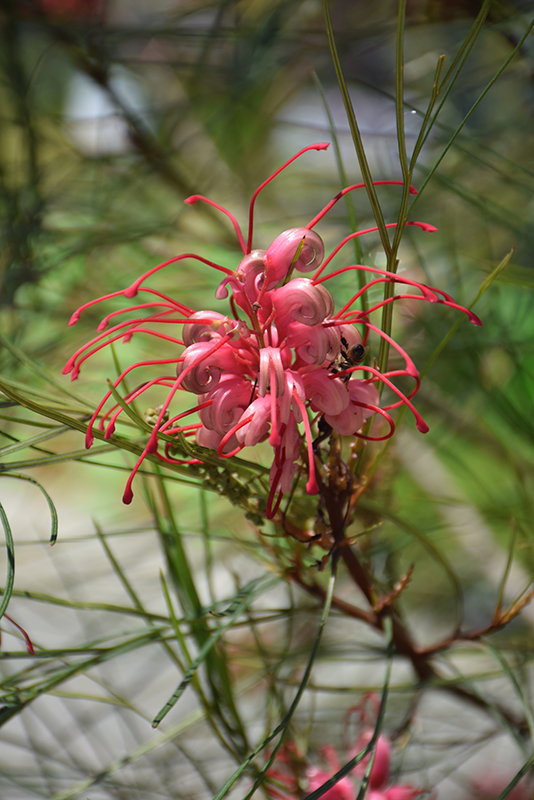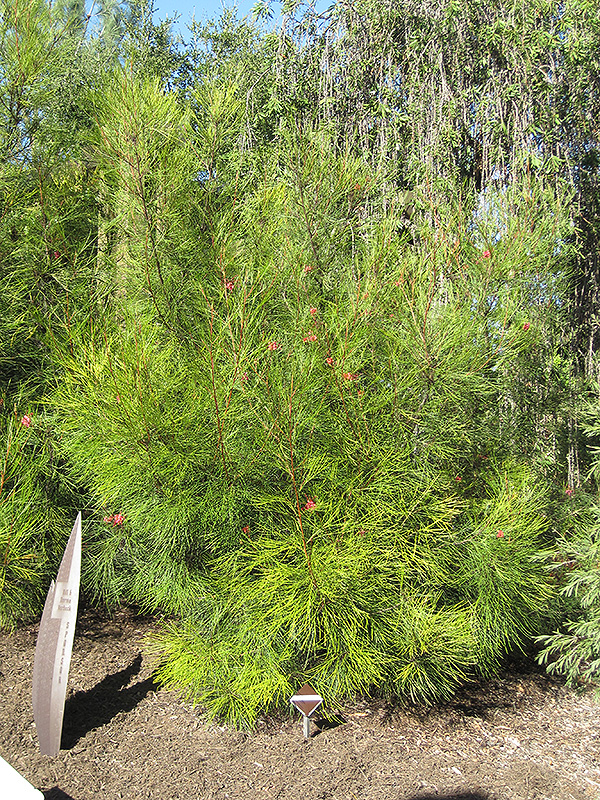Height: 15 feet
Spread: 12 feet
Sunlight:
![]()
Hardiness Zone: 9a
Description:
An adaptable species that will assume an upright, airy form; grows well in most well drained soils; large, rose-pink spidery flower clusters emerge in spring and are good for cutting; long, finely cut, narrow ferny foliage adds great texture
Ornamental Features
Long John Grevillea features showy clusters of rose spider-like flowers with pink overtones at the ends of the branches from late winter to late spring. The flowers are excellent for cutting. It has attractive green evergreen foliage which emerges chartreuse in spring. The grassy leaves are highly ornamental and remain green throughout the winter.
Landscape Attributes
Long John Grevillea is an open multi-stemmed evergreen shrub with an upright spreading habit of growth. It lends an extremely fine and delicate texture to the landscape composition which can make it a great accent feature on this basis alone.
This is a relatively low maintenance shrub, and should only be pruned after flowering to avoid removing any of the current season's flowers. It is a good choice for attracting birds and butterflies to your yard, but is not particularly attractive to deer who tend to leave it alone in favor of tastier treats. It has no significant negative characteristics.
Long John Grevillea is recommended for the following landscape applications;
- Mass Planting
- Hedges/Screening
- General Garden Use
Planting & Growing
Long John Grevillea will grow to be about 15 feet tall at maturity, with a spread of 12 feet. It has a low canopy with a typical clearance of 1 foot from the ground, and is suitable for planting under power lines. It grows at a medium rate, and under ideal conditions can be expected to live for approximately 20 years.
This shrub should only be grown in full sunlight. It does best in average to evenly moist conditions, but will not tolerate standing water. It may require supplemental watering during periods of drought or extended heat. It is not particular as to soil type or pH. It is somewhat tolerant of urban pollution. Consider applying a thick mulch around the root zone in winter to protect it in exposed locations or colder microclimates. This particular variety is an interspecific hybrid.



